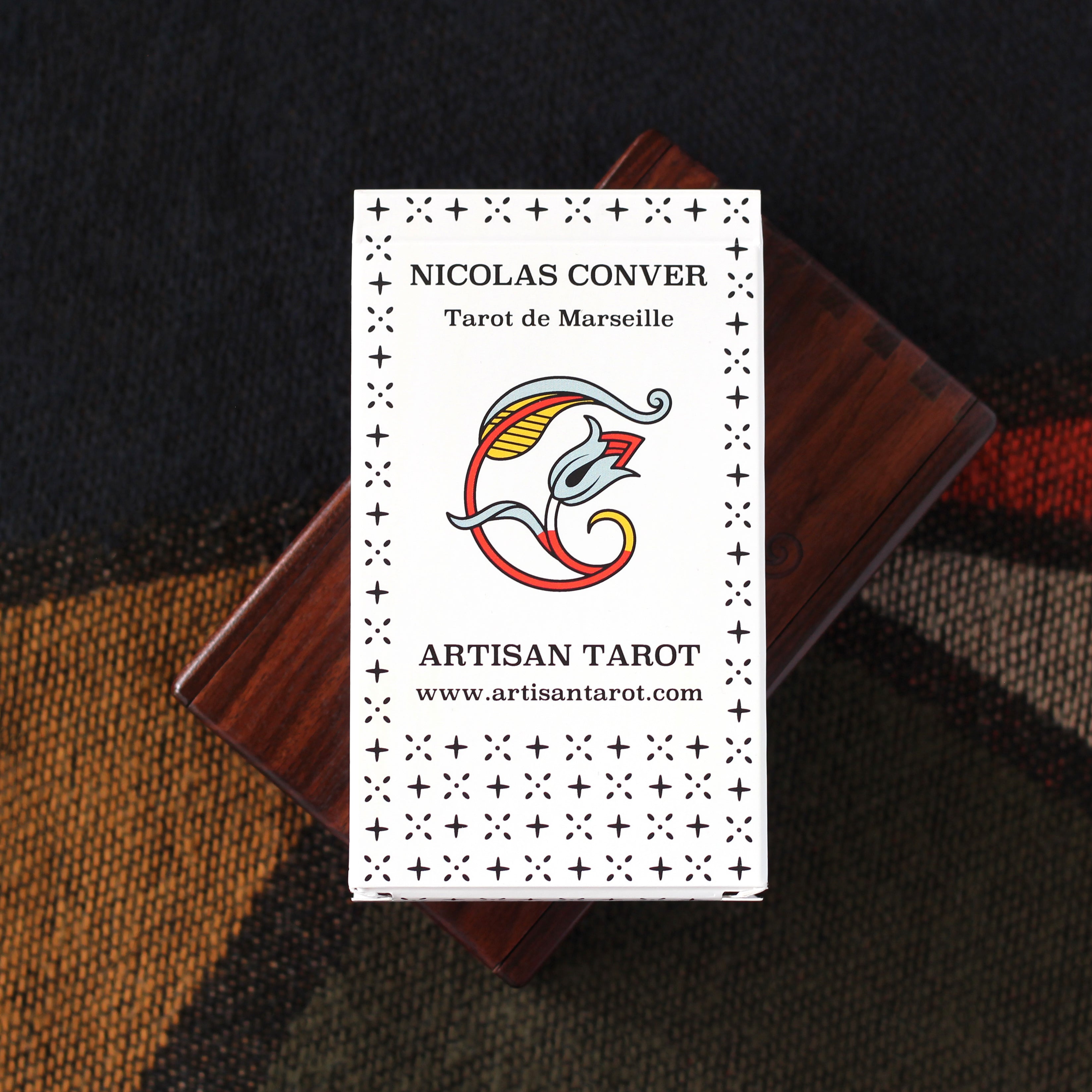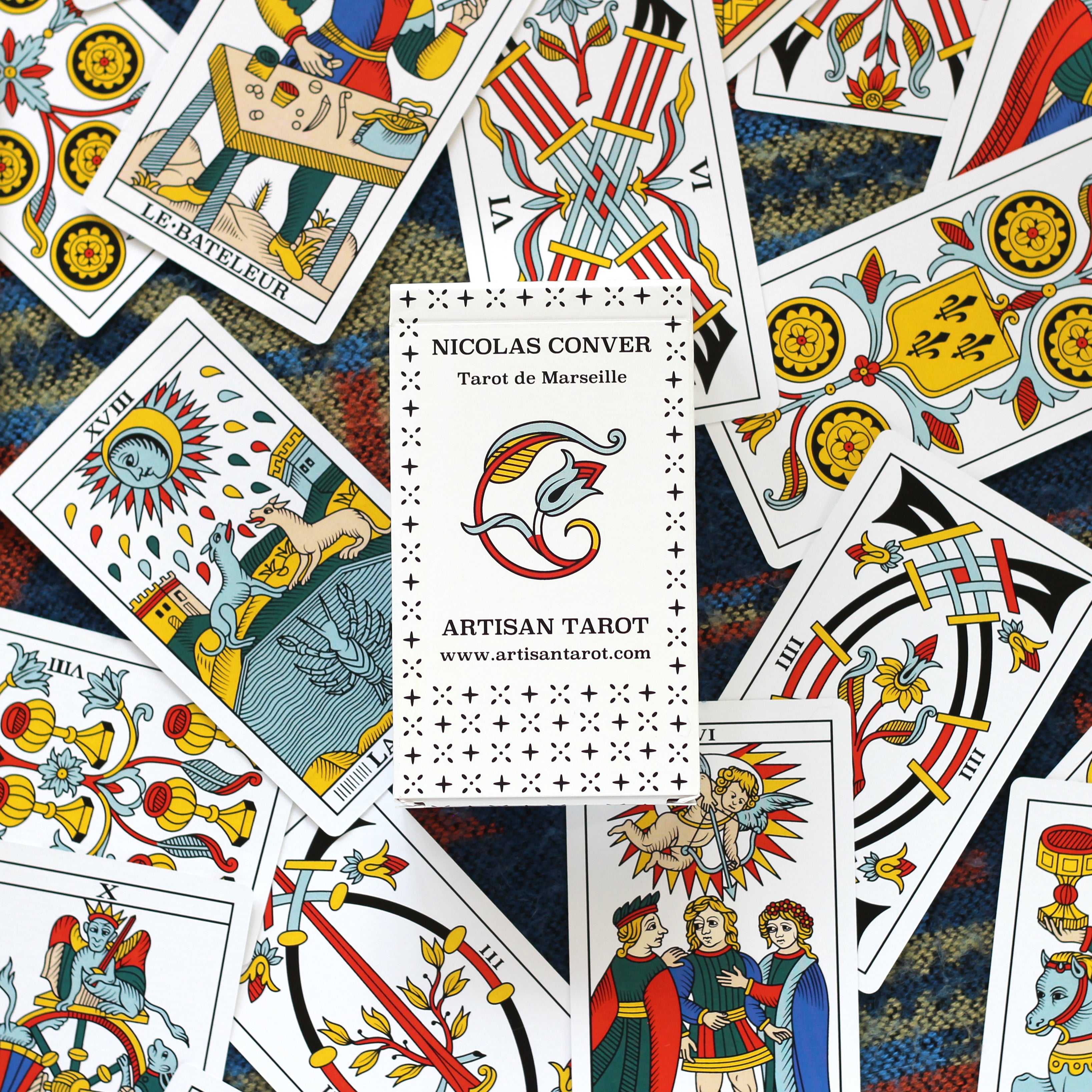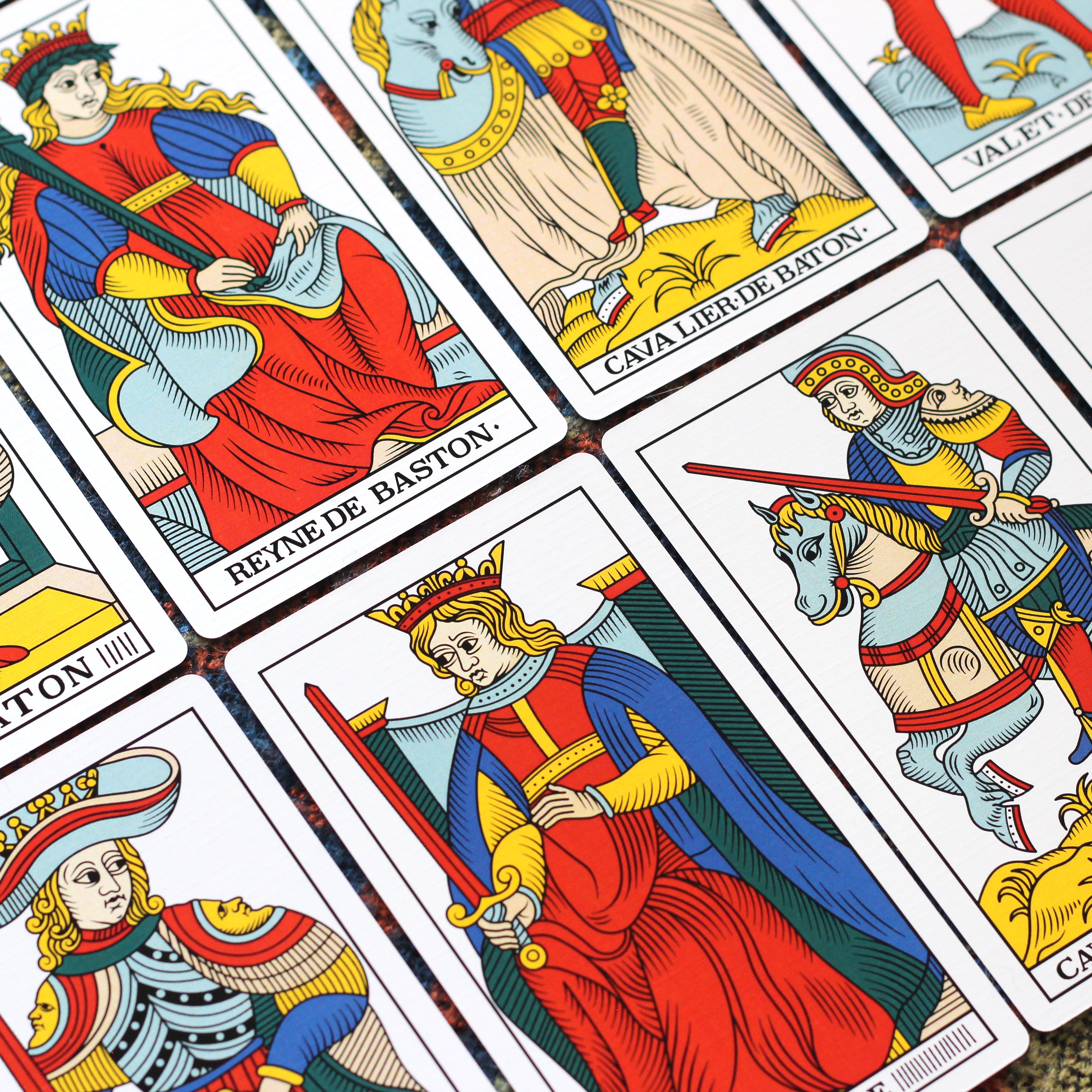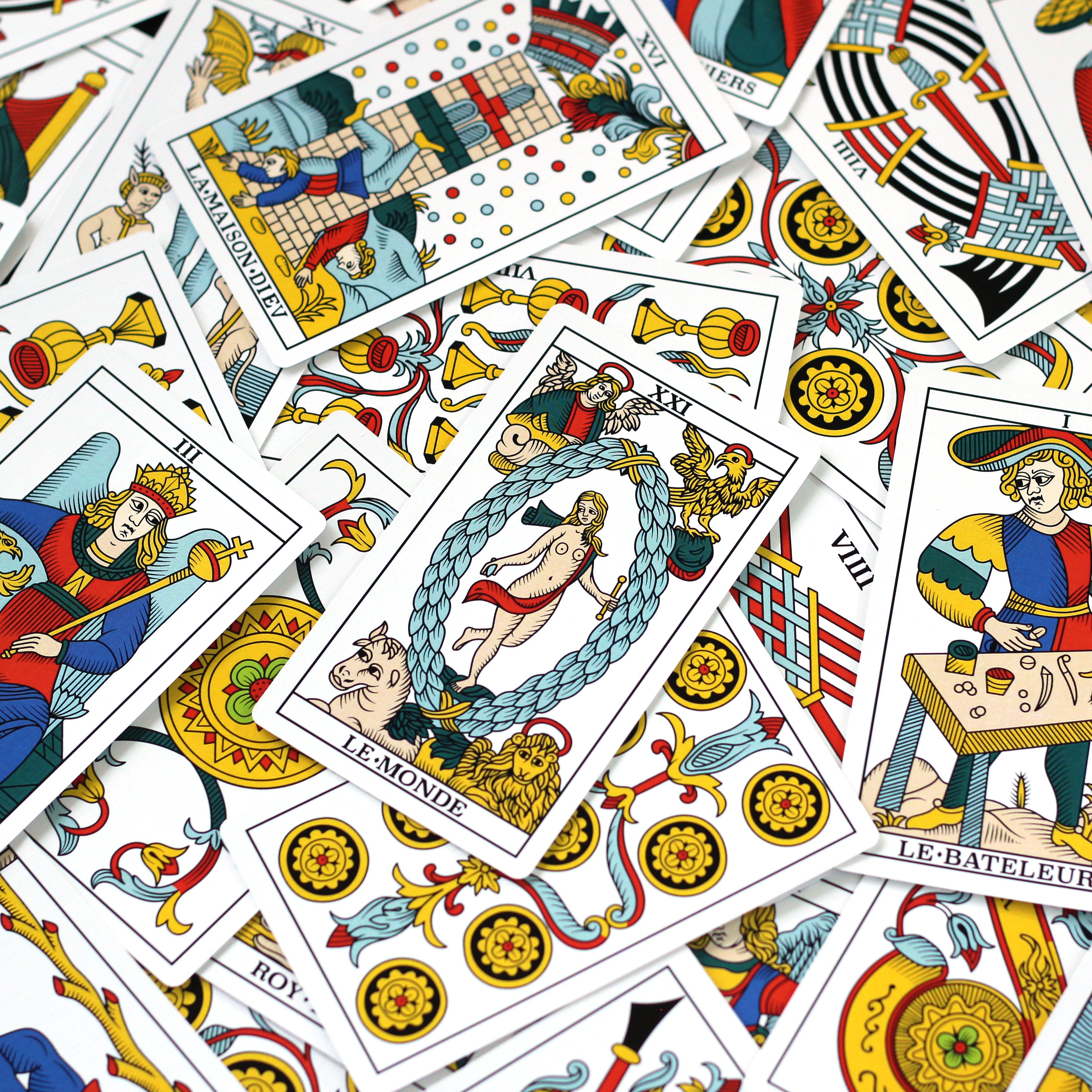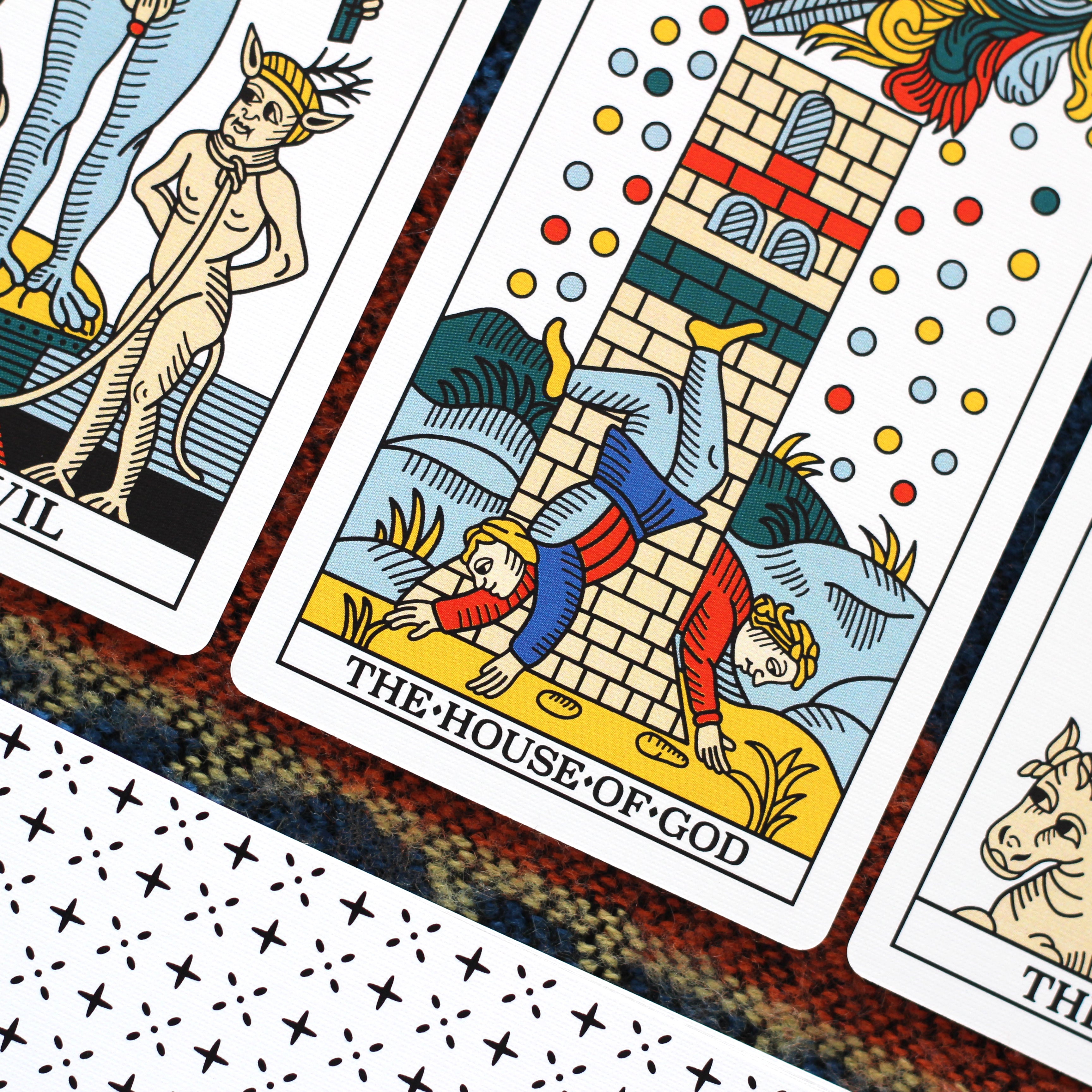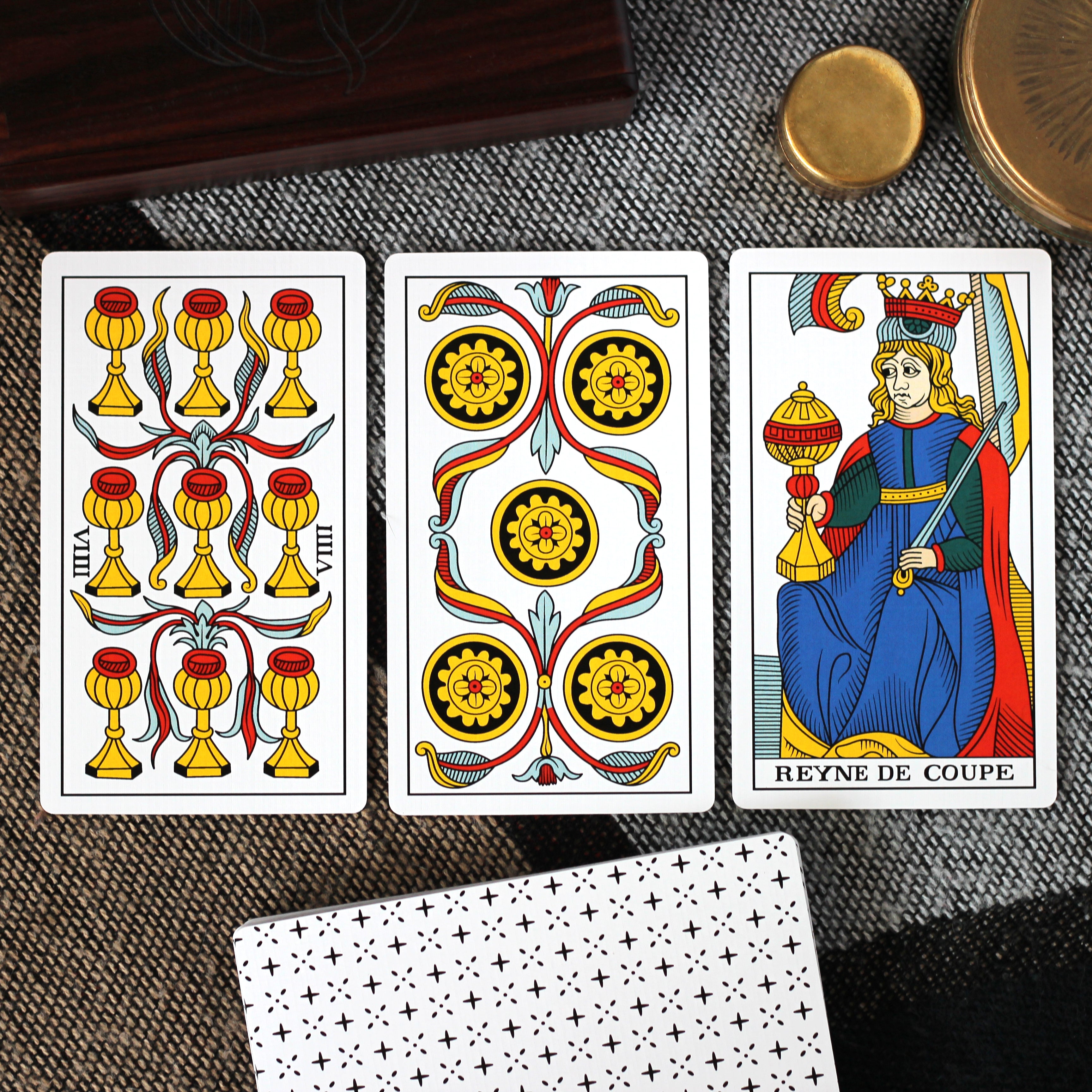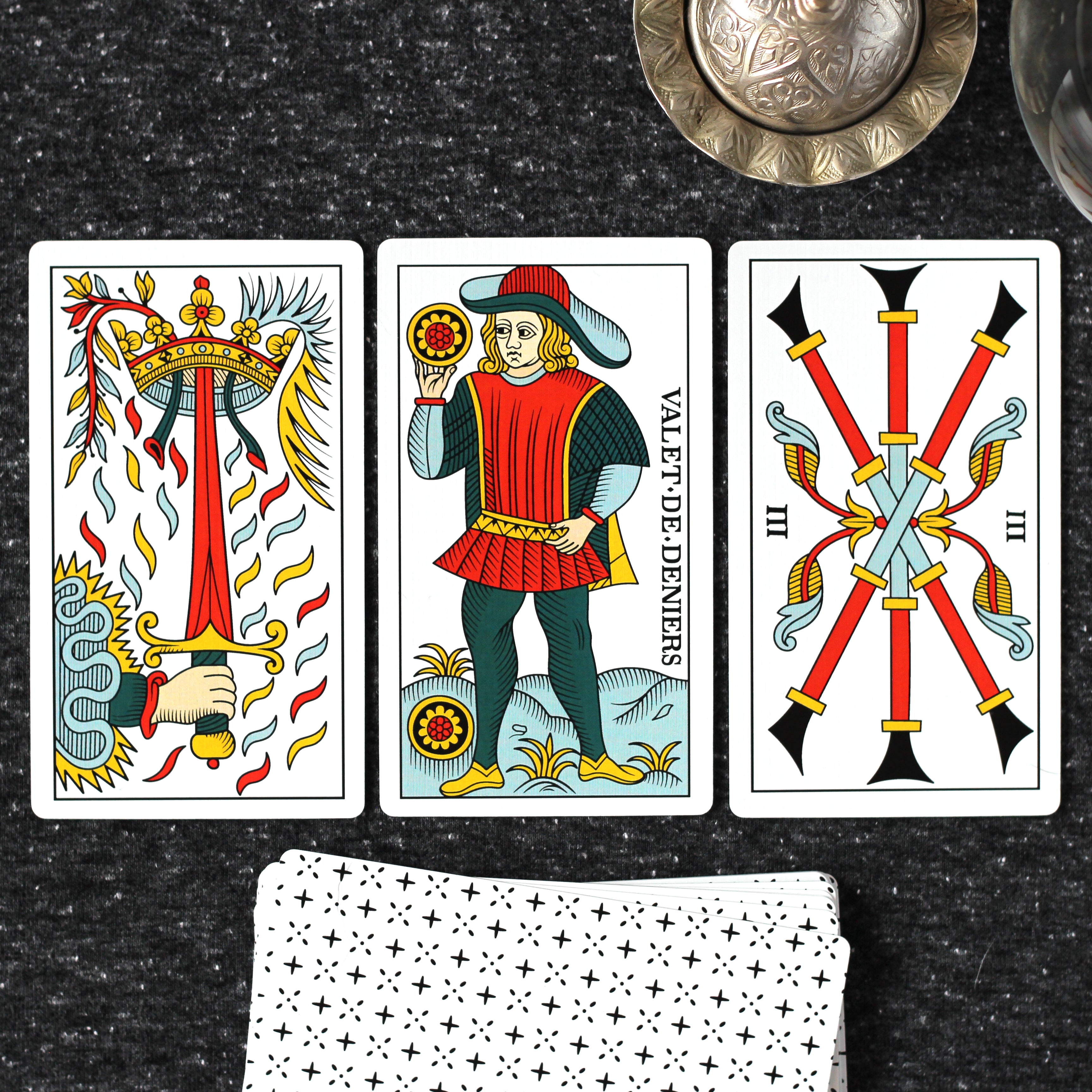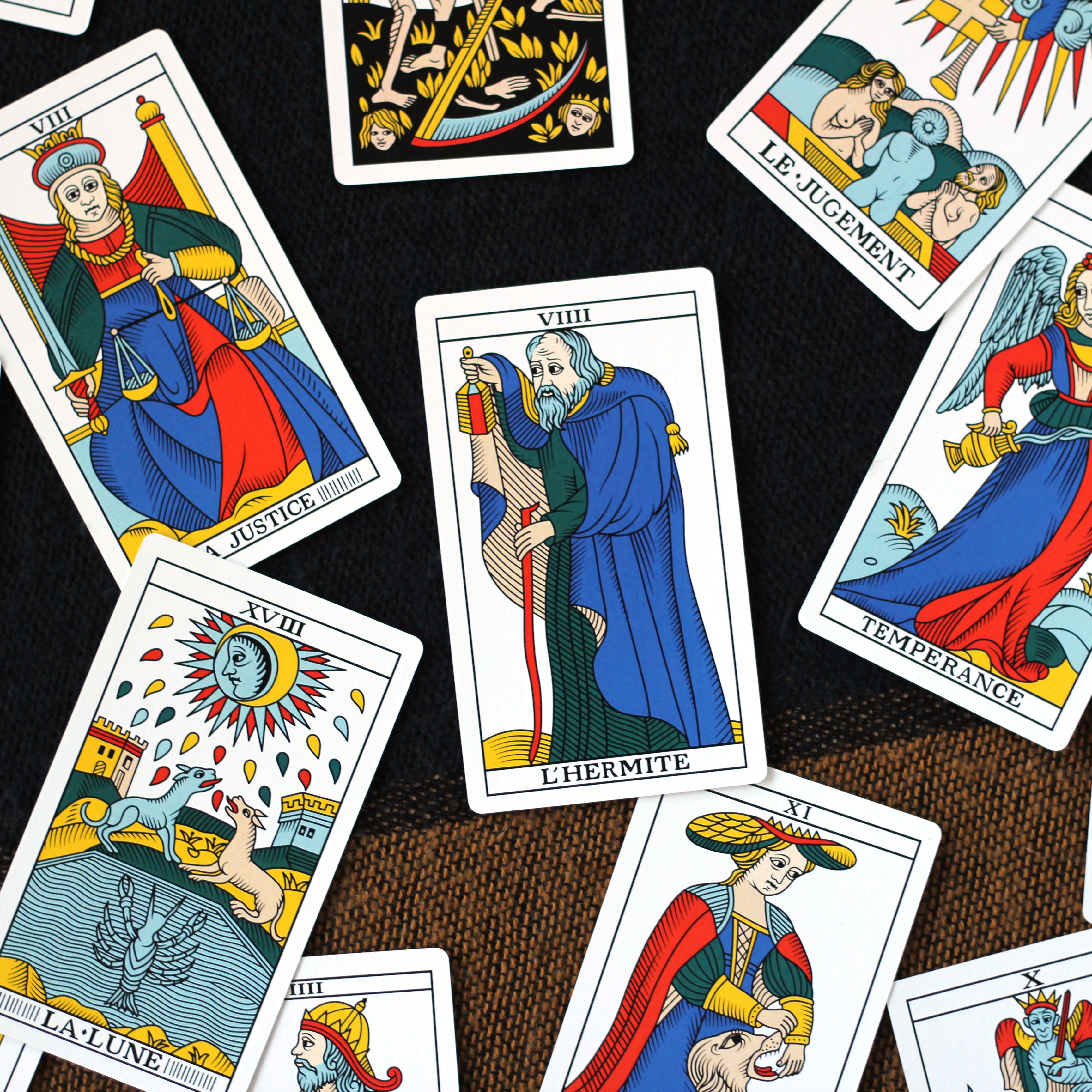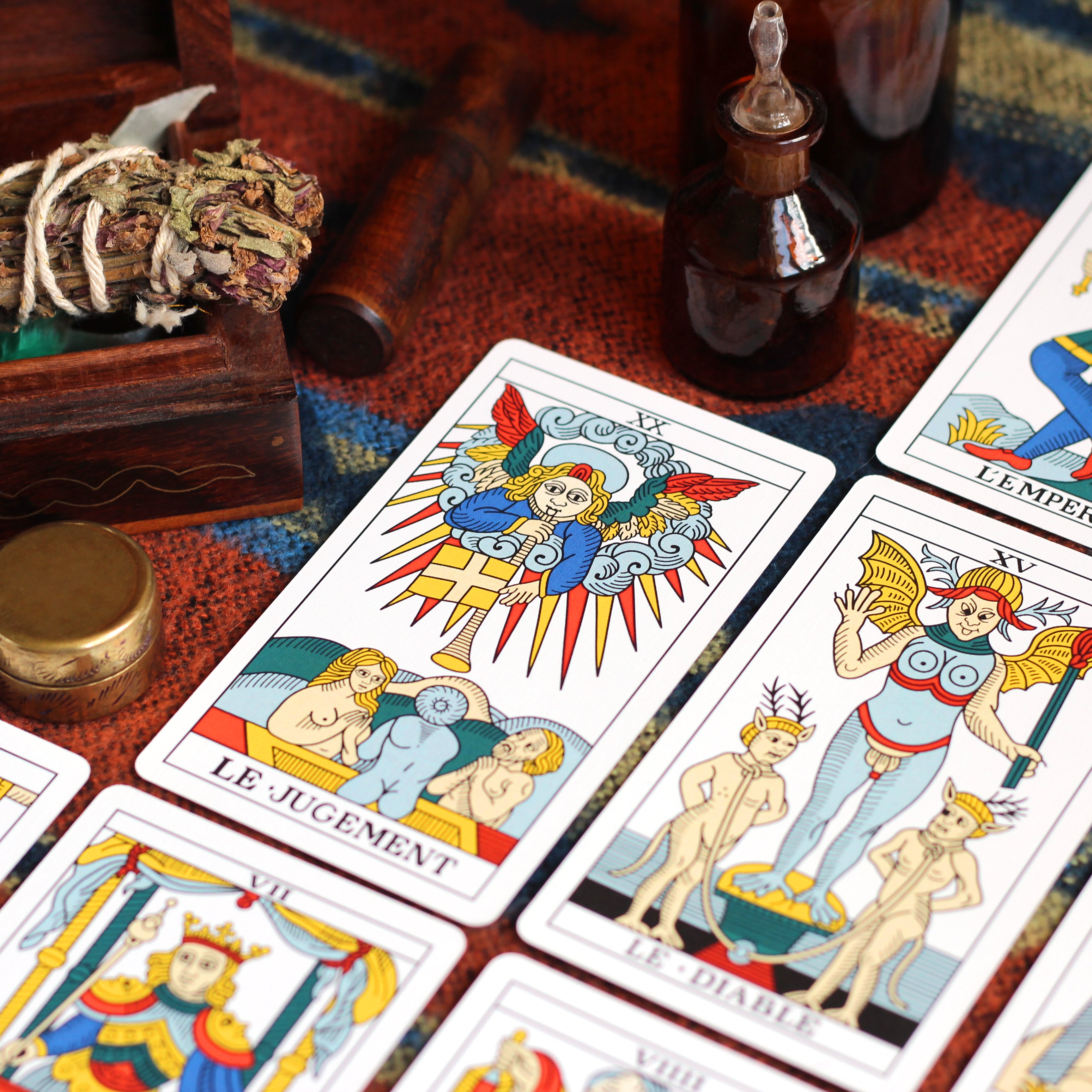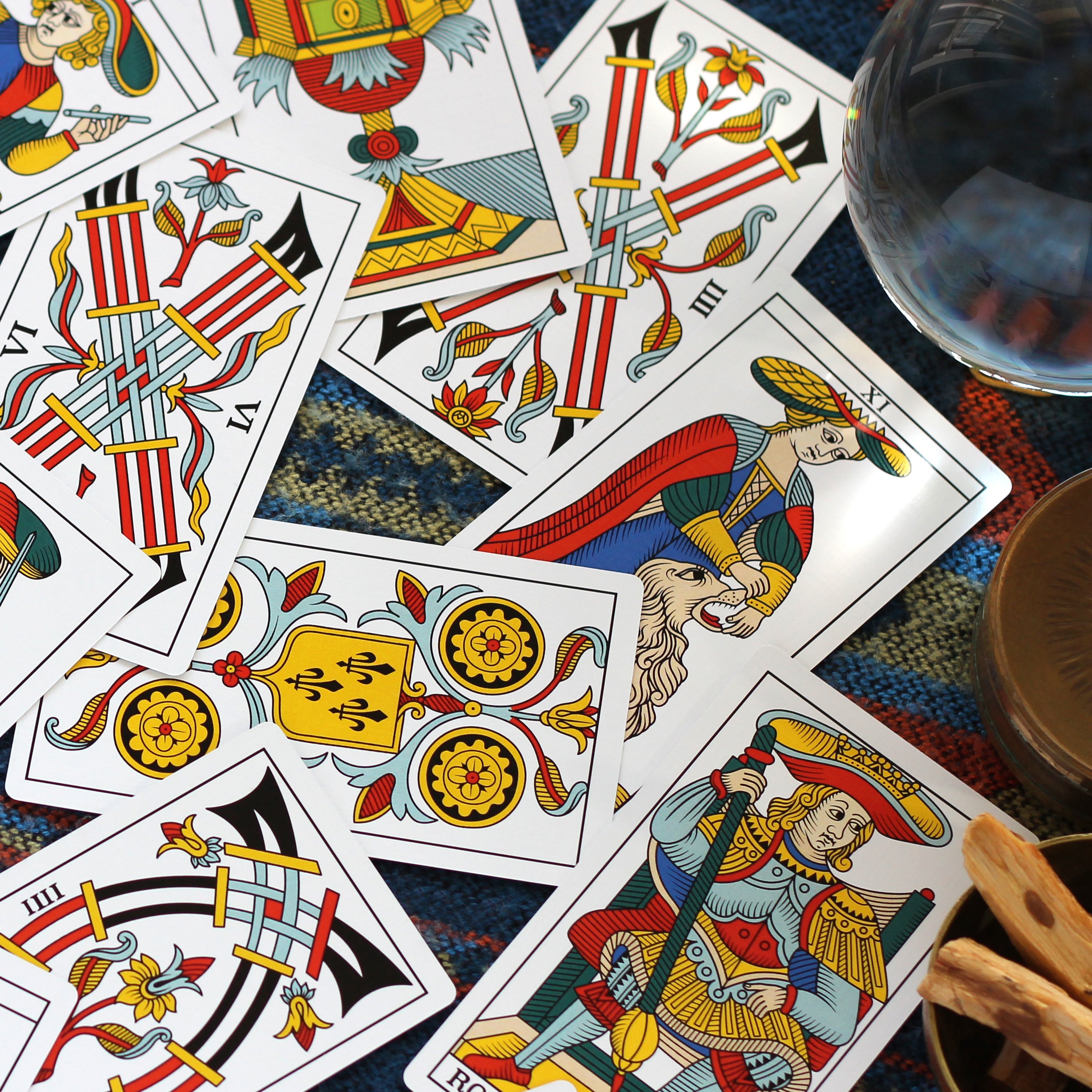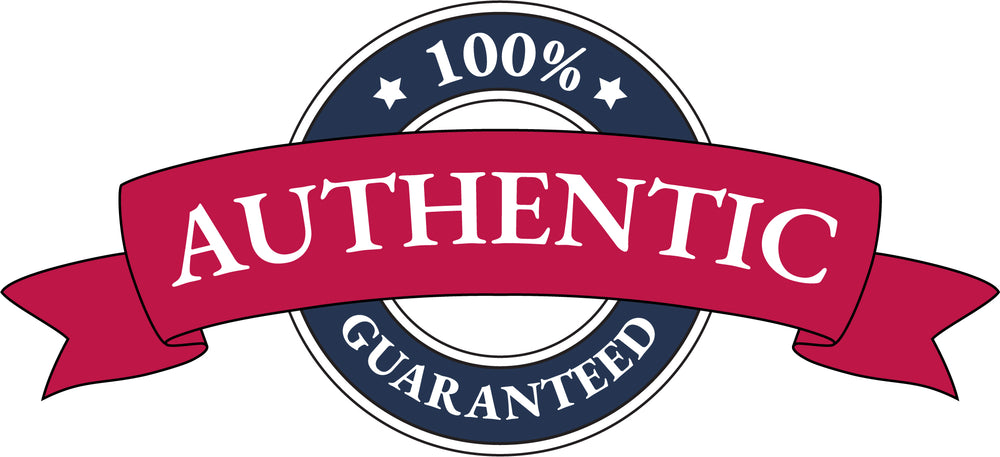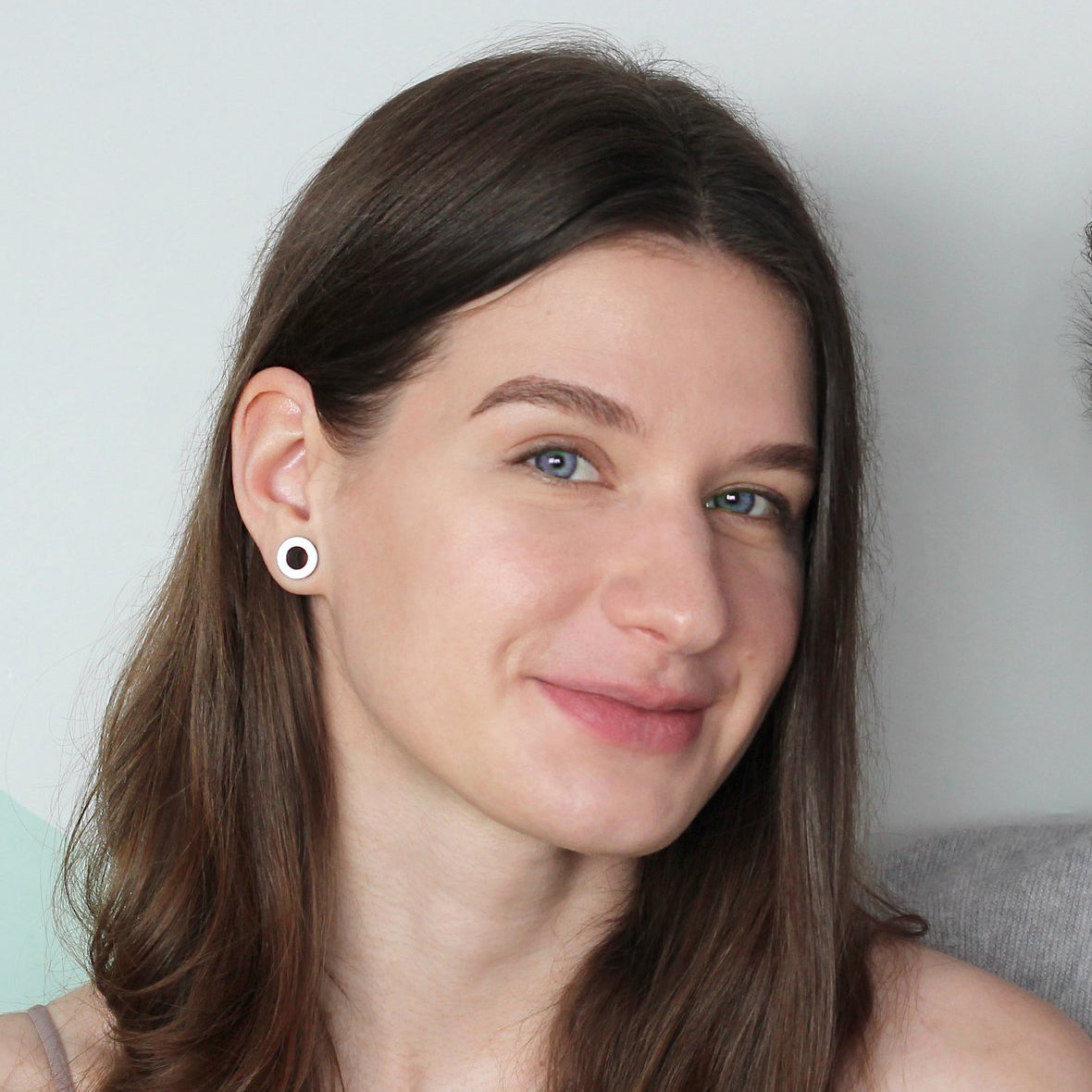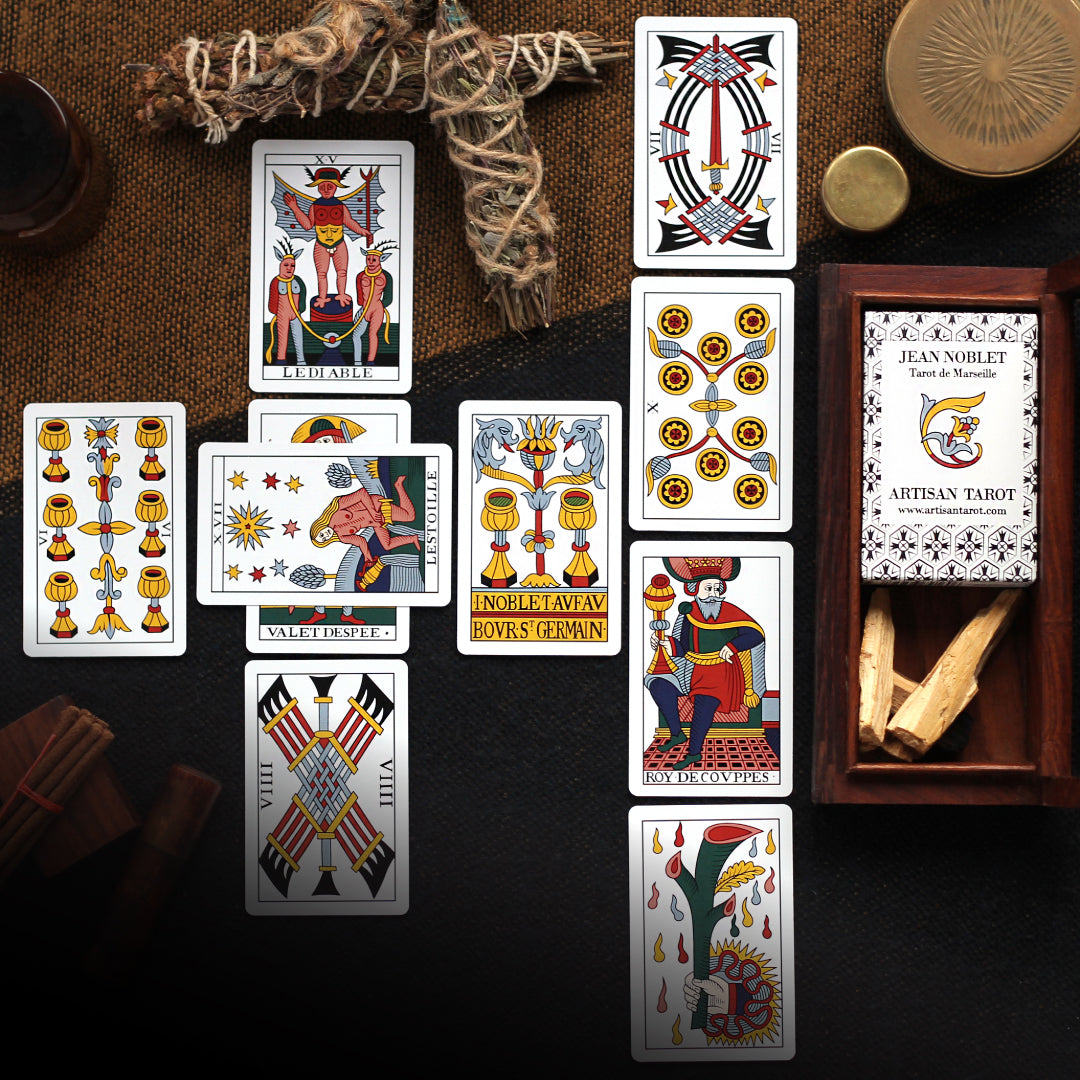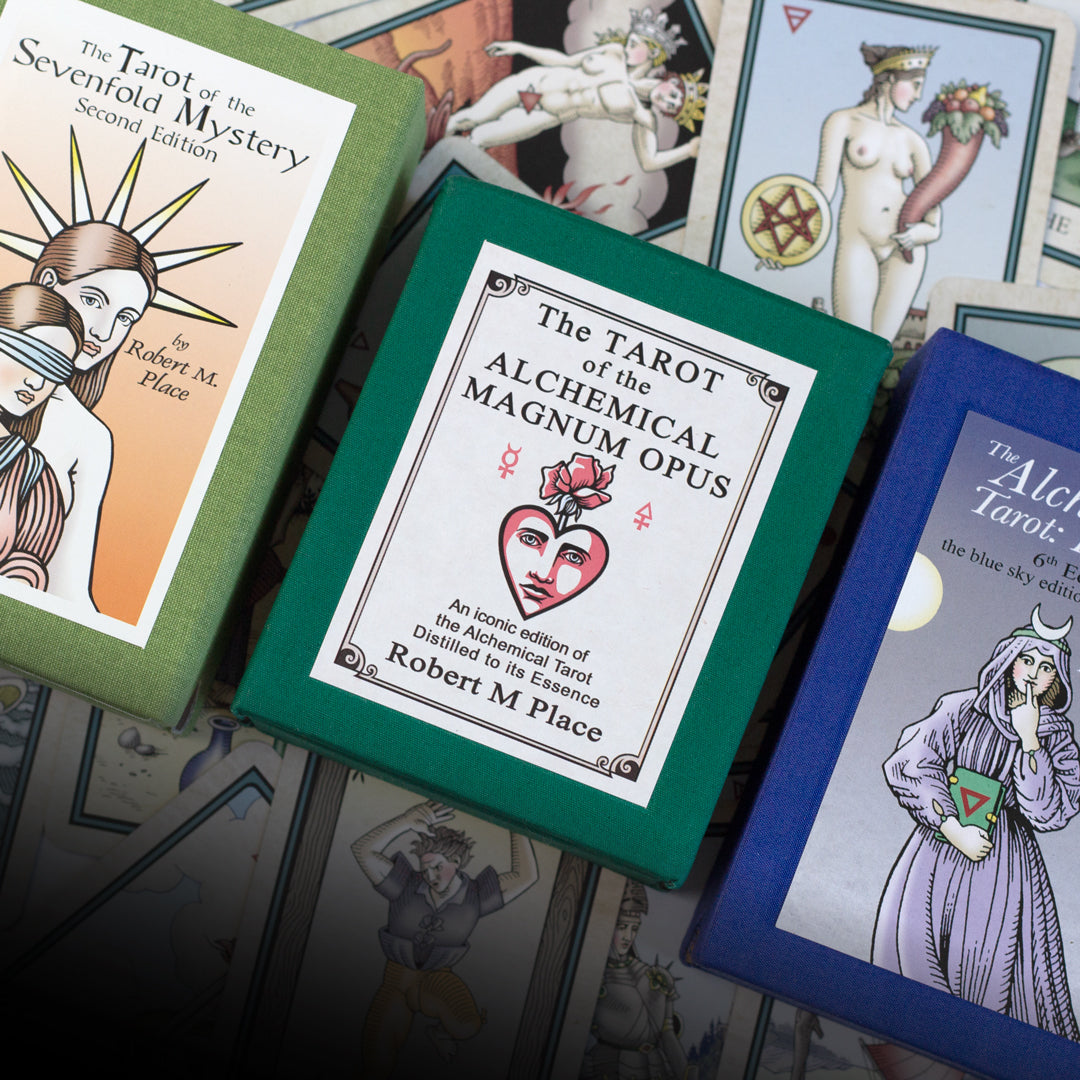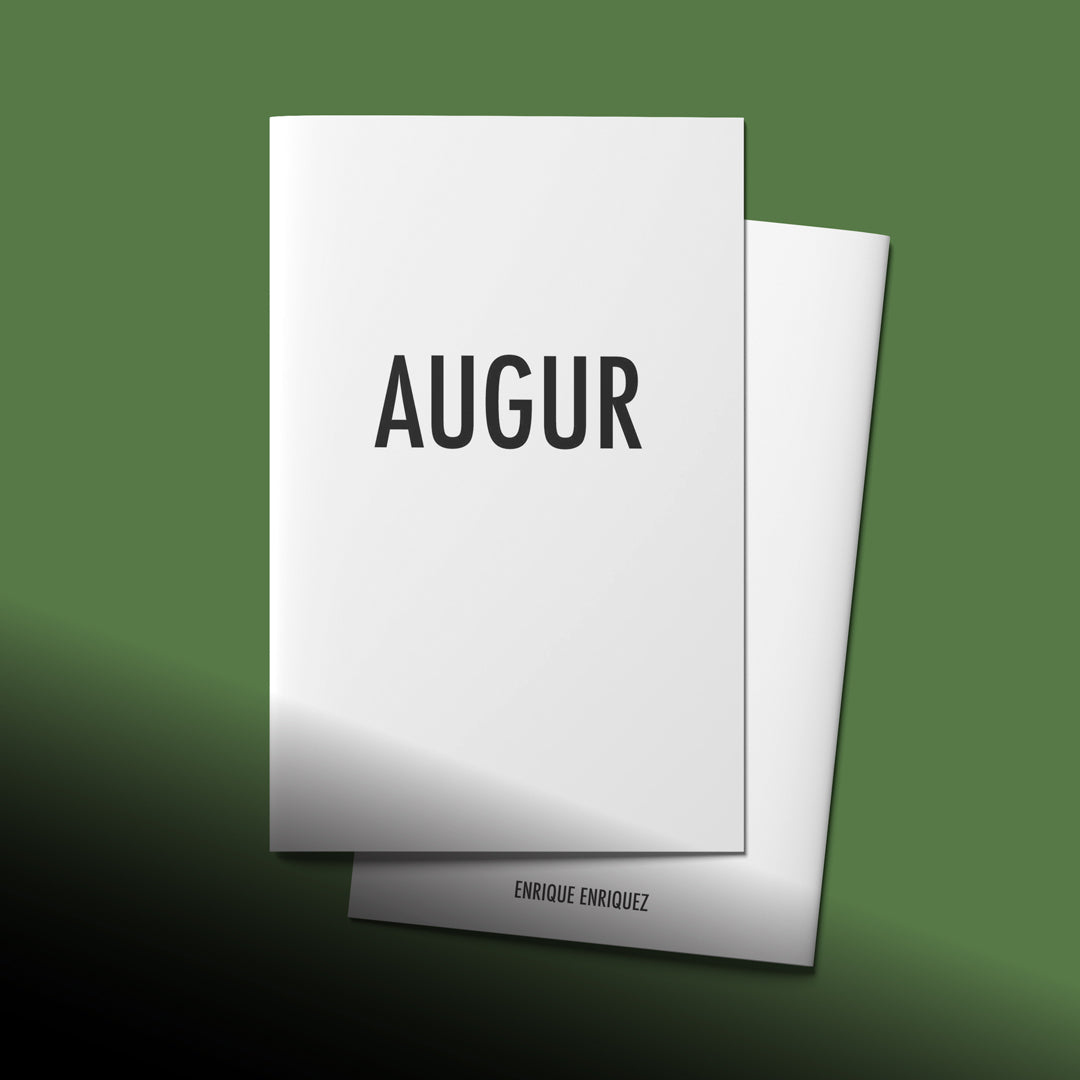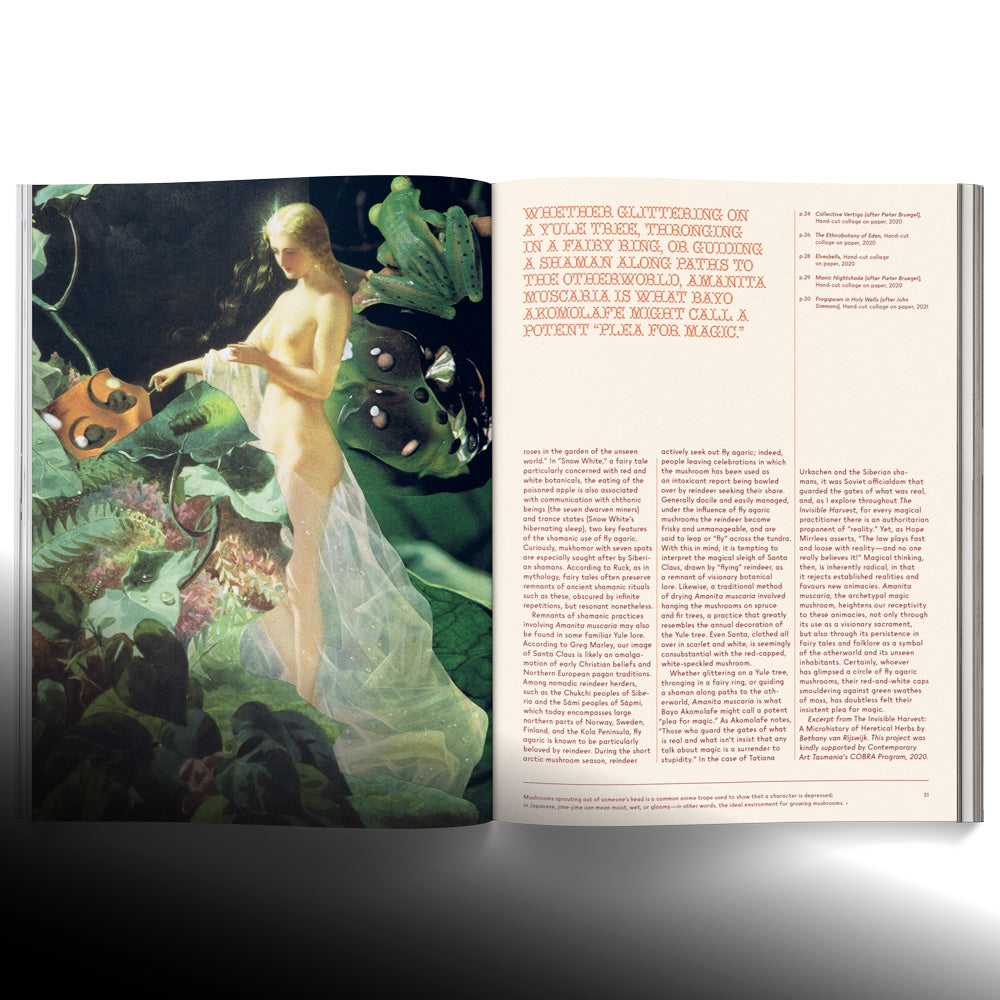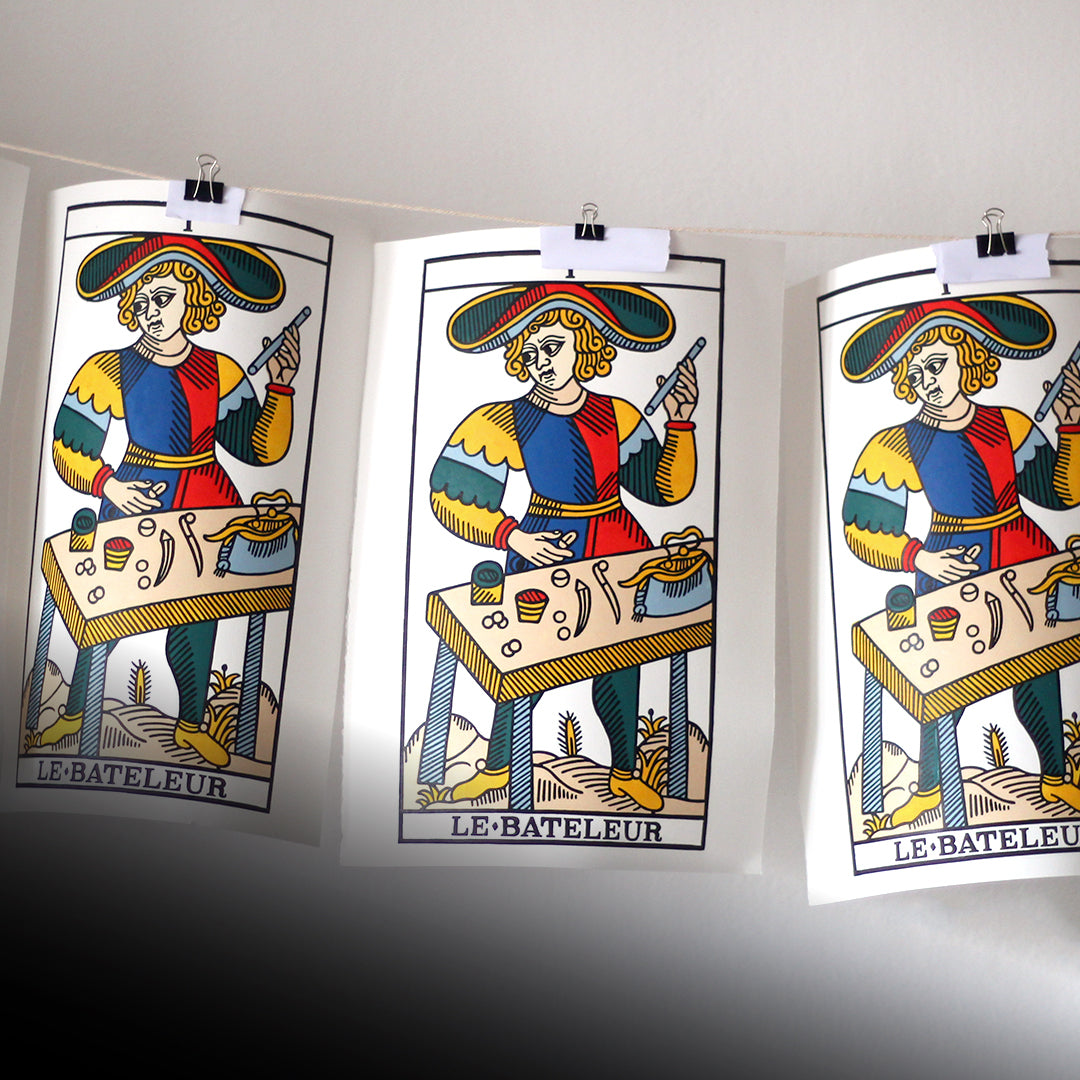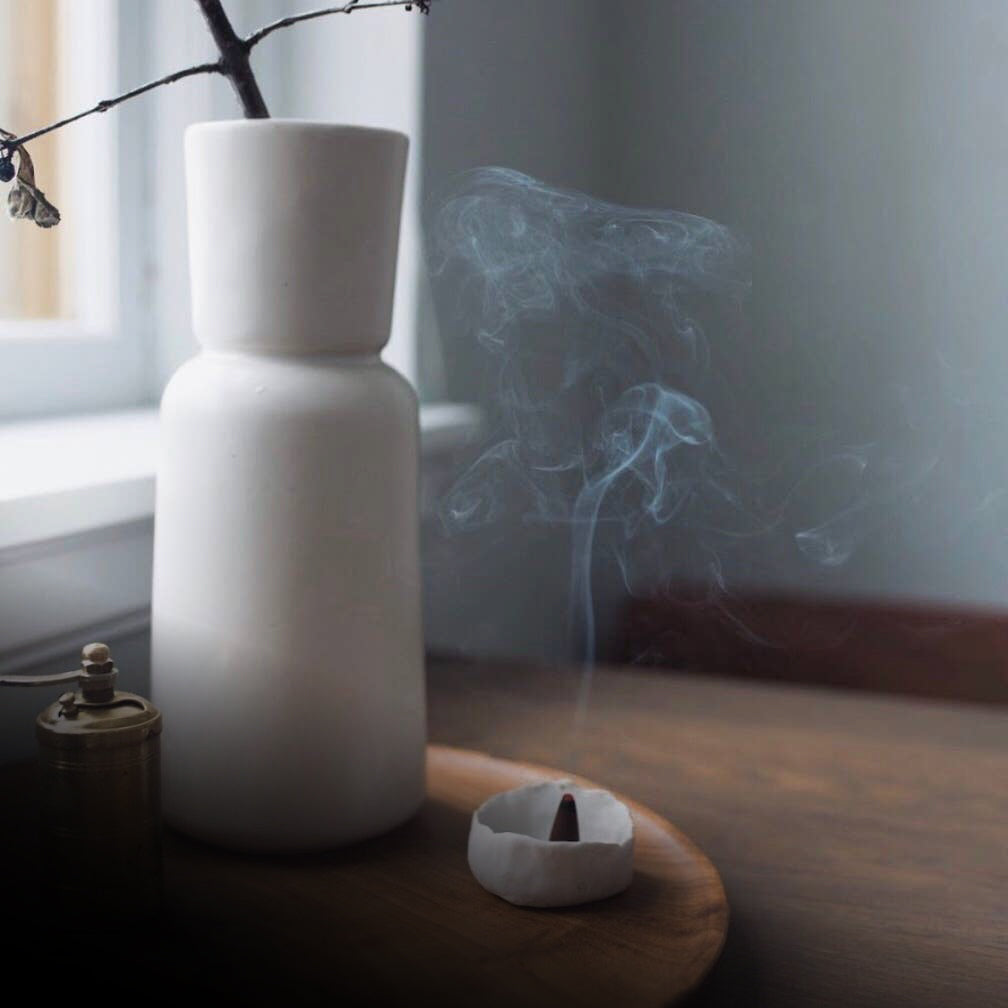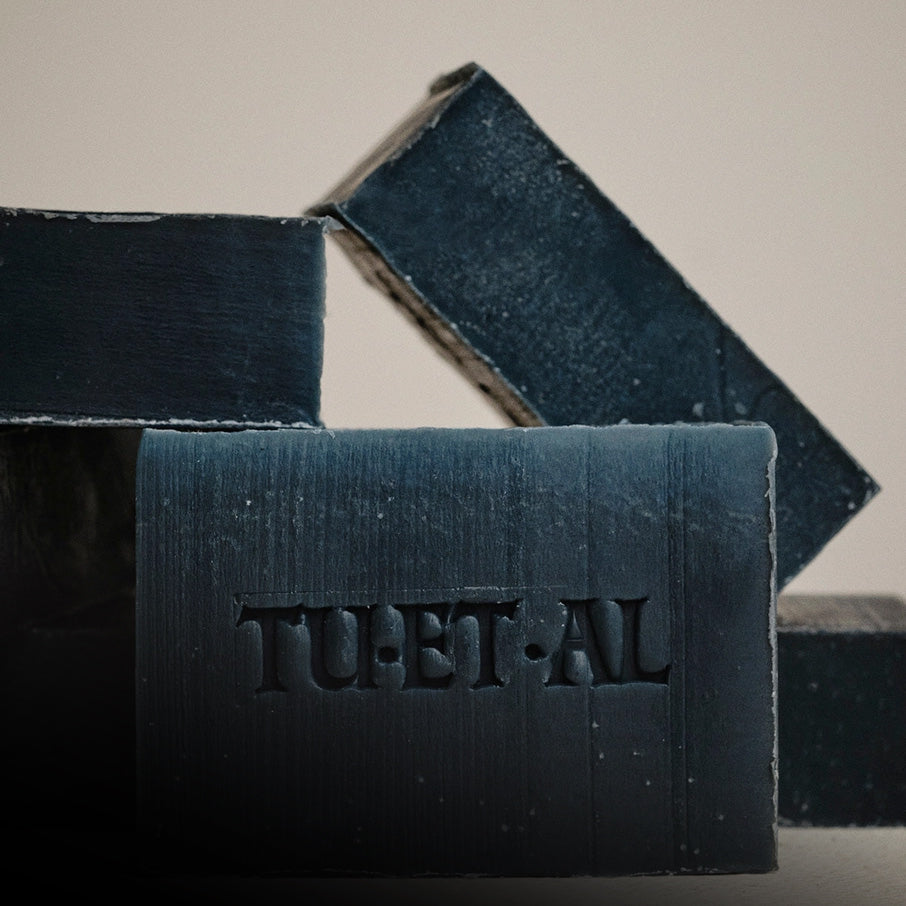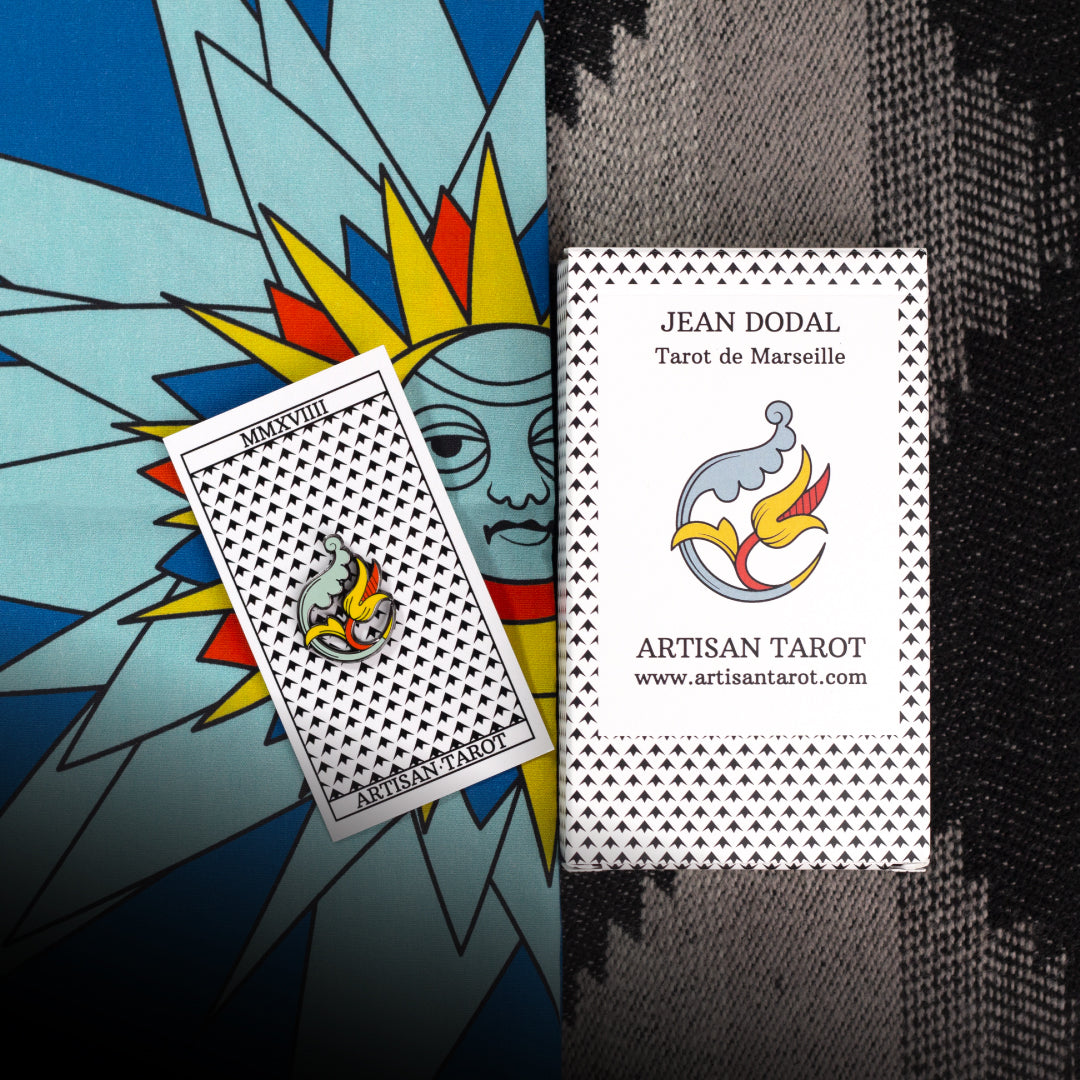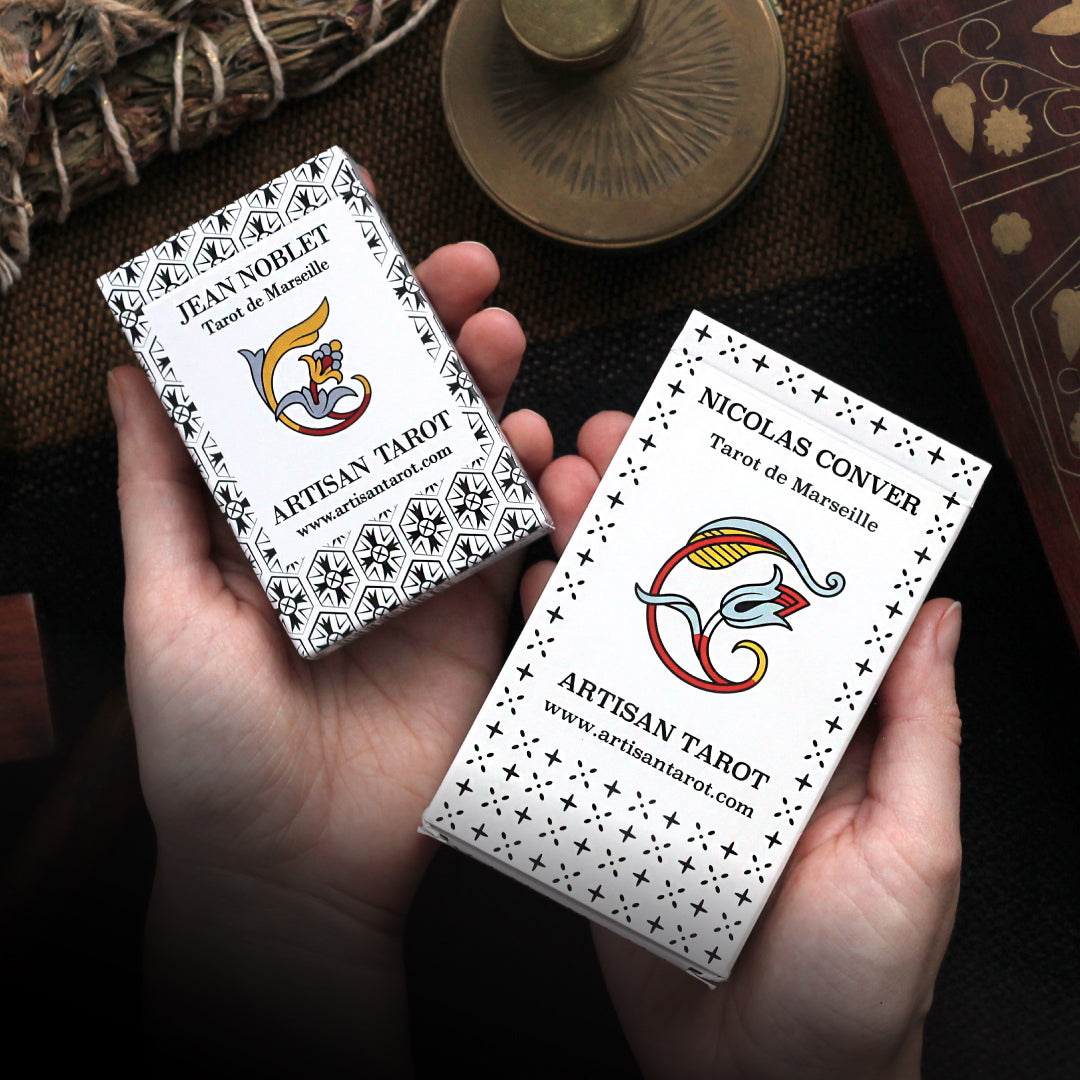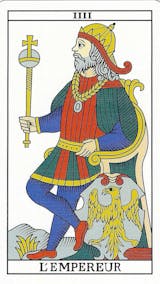Restoration Process
The restoration consisted of meticulously redrawing and recoloring the images. We also clarified many of the details to create consistency. Our goal was not to create an exact reproduction, but an elegant and refined deck that inspires the imagination of the modern reader.
Historic Information
Restoring a historic tarot deck is a major undertaking. For this restoration, we wanted to respect the tradition of the cards while also updating them with modern technology. Before we started restoring the Nicolas Conver Tarot, we asked ourselves these questions.
- How much do we want to change and why?
- Are there reasons behind some of the irregularities?
- Is it possible to understand the artist’s intentions?
- Were the limited printing capabilities at the time a cause for some of the irregularities? If so, which ones?
- Is it okay to update what seems to be printing or carving errors to make the cards feel complete?
Thankfully, many restorations of the Nicolas Conver tarot have come before us. This allowed us to gain a better understanding of how other artists went about the restoration process. We first examined the original cards and the various restorations to gain insight into how they were restored. Although there are many restorations, none of the decks are the same.
For example, Yoav Ben-dov‘s images are very true to the originals. The lines match up perfectly with the original artwork. However, he decided to change the faces to be more appealing for modern audiences. While he updated the faces, he kept all the irregularities, such as the unfinished hooves, in Le Chariot.
The Jodorowsky-Camoin deck takes an entirely different approach. They updated some irregularities, but kept others. They also added items to the cards: eggs, stars on the curtains for Le Chariot, stairs and a door on La Maison Dieu, a face on the stomach of Le Diable, and many other things. Their deck appears to be a mix of other Marseille tarot and their own ideas.
Our approach was simple, but complex and time-consuming. Our goal was to create a deck that feels complete without making additions that would change how the cards are read. And if a change was made, we wanted it to be historically justified.
For example, on Le Chariot we rounded the wheels, added spokes, completed the horses’ hooves, and added a red tie to hold the curtains. On La Justice, we made the armrest and seat behind her more apparent. We also updated the colors of the scales and her dress.
However, we felt like some irregularities were made on purpose. For example, on La Force, her left shoulder is slightly out of place. So, we corrected it. However, we kept her six toes. While odd, it seems intentional.
We also made the cards wider to match modern tarot card size, so we had to imagine how the scenes would be expanded. For example, we had to draw the back of Lempereur’s chair. Luckily, many vintage tarot decks are in the public domain, making them available for use as references. We also studied historic images of chairs to make sure the chair is as authentic as possible.
We hope you'll appreciate the careful recreation process that went into creating this deck and will find it a joy to use in your readings.
